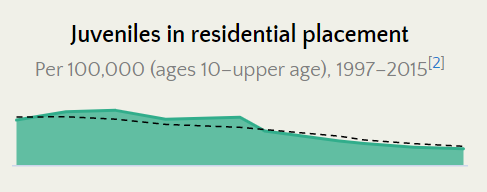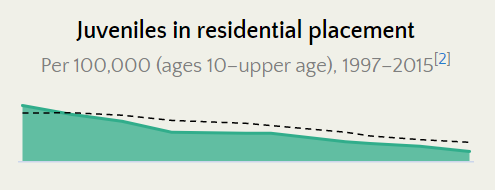Black Children Continue To Be Pushed Out of American Schools During Pandemic
In May 2020, amid the twin pandemics of COVID-19 and racial unrest spurred by the police killing of George Floyd, an unarmed Black man, a less-reported story was playing out in Michigan, where Judge Mary Ellen Brennan, a White female, sentenced a 15-year Black girl to Oakland County’s Children’s Village, a juvenile detention facility, for failing to complete her compulsory online homework.
In August, police were called to the home of a 12-year Black boy in Colorado; the boy was suspended for five days for playing with a toy Nerf gun during a virtual art class.
These two cases represent high-profile cases of children whose lives have been interrupted due to school disciplinary practices, the policies and practices that each year catapult countless nameless, faceless children into traumatic disciplinary scenarios arising from experiences in America’s compulsory schools that could foreseeably impact them for a lifetime must be stopped.
The Michigan case in particular confirms the overt actions that contribute to the school-to-prison pipeline. According to the Center for Criminal Justice Research at Texas Southern University, Black students are suspended at significantly higher rates than their White and Hispanic classmates (Lurie & Rios, 2016; Welsh, Richard & Little, Shafiqua, 2018; Hannon, DeFina, & Bruch, 2013).
Despite the recent push for alternatives to school suspensions, few, if any, have sought to examine the extent to which certain student suspensions result from various superfluous behavioral actions. Despite the advances in our understanding of the short- and long-term impacts of school suspensions, there remains a need to understand the behavioral responses that serve as a catalyst of the educational systems “zero tolerance” approach to school discipline.
Since schools have re-opened, there have been cases reported of students being punished by banning their access to their school’s online learning platforms resulting in virtual suspensions. In a Chalkbeat article Kaylyn Belsha writes that “increased attention to student misbehavior has advocates and many parents very worried that students who were disproportionately removed from classrooms before the pandemic — namely Black and Native students, and students with disabilities — will bear the brunt of these new consequences, undermining schools’ promises to provide students from hard-hit communities with extra social and emotional support.”
Even a pandemic is no match for the ongoing and pervasive disparities in school discipline for black and brown kids. Public schools’ push out of Black children should prompt immediate reform in rules that fuel the school-to-prison pipeline.
SCHOOL DISCIPLINE TRENDS
Data from 2018 from the U.S. Department of Education Office for Civil Rights (2018) found that Black girls in high school are:
• Six (6) times more likely than white girls to be suspended.
• Three (3) times more likely to receive one (1) or more in-school suspensions than white female students
• Three (3) times more likely to be restrained than white female students
• Two (2) times more likely to receive corporal punishment than white female students
• Four (4) times more likely to be arrested than white females
• Three (3) times more likely to be referred to law enforcement than white females
A 2018 GAO report found that “Black students, boys, and students with disabilities were disproportionately disciplined (e.g., suspensions and expulsions) in K-12 public schools, according to GAO’s analysis of Department of Education (Education) national civil rights data for school year 2013-14, the most recent available. These disparities were widespread and persisted regardless of the type of disciplinary action, level of school poverty, or type of public school attended. For example, Black students accounted for 15.5 percent of all public school students, but represented about 39 percent of students suspended from school—an overrepresentation of about 23 percentage points.”
New school rules have been implemented governing online instruction, including whether computer cameras must be turned on, clothing, hairstyles, eating, etc. These rules leave students arbitrarily subject to school disciplinary actions.
“Research has shown that students who experience discipline that removes them from the classroom are more likely to repeat a grade, drop out of school, and become involved in the juvenile justice system.” (Discipline Disparities for Black Students, Boys, and Students with Disabilities)
JUVENILE JUSTICE AND EDUCATION
Juvenile court has a long history in the U.S. and was “first established in 1899 in Cook County, Illinois and then rapidly spread across the country.” This court was the precursor to the juvenile justice system we know of today. Sadly “during a single year, an estimated 2.1 million youth under the age of 18 are arrested in the United States.” Systemic racism compounds matters when “youth of color are overrepresented in many aspects of the juvenile justice system, from arrest to court referral and confinement.” The data below provides a snapshot of the numbers in Texas and Georgia.

Source: http://www.jjgps.org/texas

Source: http://www.jjgps.org/georgia
The Juvenile Justice System (JJS) was created to address criminal and behavioral problems of youth between the ages of 10 and 18 and was intended to be a system established as a means of derailing young adults from the Criminal Justice System (CJS).
A 2014 Southern Education Foundation (SEF) report finds that “the juvenile justice education programs that serve hundreds of thousands of students are characterized by low expectations, inadequate supports to address student needs, and ineffective instruction and technology. Students come out of the juvenile justice system in worse shape than when they entered, struggling to return to school or get their lives back on track.” The SEF report further raises awareness “that schools are disciplining and suspending minority students at alarming rates.”
Findings from the Center for Educational Opportunity at Albany State University revealed disturbing Georgia education statistics for those in the care of the Department of Juvenile Justice:
• Few students are performing at the ‘proficient’ or ‘distinguished’ levels on the Georgia Milestones Assessments; thus, indicating the lack of educational preparedness they possess as they transition out of juvenile justice.
• Inconsistencies in the number of students being tested across the 10 areas of the Georgia Milestones reflects that while most students are being tested in 9th grade literature, coordinate algebra, and biology, those learners at ‘distinguished’ levels are absent, but only 11.7 percent performing at the ‘proficient’ level in 9th grade literature.
• Ongoing changes in state-level standards and assessments means that implementing those measures among students in the juvenile justice system will be challenging.
• Lack of educational data that is longitudinal and disaggregated makes it difficult to understand trends and impacts on education performance of those in juvenile justice.
What the data above do not reflect are the total number of students in the juvenile justice system who were not tested; whether their educational levels prior to being placed in juvenile justice system were higher than the numbers denoted above; what educational support is made available to these youth; and what their respective plans for transitioning back into society will be.
POLICY RECOMMENDATIONS
Some research recommendations to consider to better inform policy change, include:
Hire Black teachers. Research shows that students with same-race teachers experience more favorable academic results and better disciplinary outcomes. Rural school districts must find ways to identify diverse teacher talent that reflects the students they serve.
Prioritize empathy and antiracism in schools. Such efforts will create improved methods of communicating by allowing teachers to gain a better understanding of the challenges their students face, while balancing the demands of teaching content.
Work to actively reduce school suspensions. There are also evidence-based resources available to help schools actively reduce school suspensions through an examination of:
• Total counts of suspensions or referrals year-over-year;
• In-school suspensions vs. out of school suspensions;
• Incident reasons;
• Demographic breakdowns of incidents;
• Patterns by grade, department and teacher;
• Recidivism rates;
• Percentages of students with zero incidents.
Invest in teacher implicit bias training. Rooted in social identity theory, implicit bias training will help teachers understand their own assumptions and stereotypes of their students and the ways in which they interact with them.
Orient school discipline policies around a conception of Social-Emotional Learning (SEL) that stresses Equity and Promotes both Adults’ and Students’ SEL competencies. Growing evidence has shown suspending or expelling students from school for misconduct can harm academic progress; incorporating social and emotional learning (SEL) practices may help both students and school climate.
CONCLUSION
If we are serious as a society about dismantling systemic racism, now is the time to review and drastically revise our approach to K-12 school discipline—and schooling itself—so that students of color are not pushed out and denied the opportunity to succeed.
A system that incarcerates a teenager for failing to complete her homework is fundamentally flawed. A system that suspends a boy for playing with a Nerf gun during online learning is unfair. A system that fails to educate those who make mistakes early in life denies both forgiveness and future success.
We are not advocating for system without rules; rather, the rules must be designed with all students in mind. The system needs to look like the people it serves, and it must include second chances and the ability to adapt.
Now, more than ever before, we must walk long miles in the shoes of families who come from different backgrounds and cultures than we do. We are called upon to embrace empathy, not judgment, if we want to build the inclusive framework we need for our K-12 system to serve all students.





